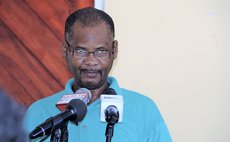"Dominica's 2016 National Budget - Of Feathers and Pixie Dust".
The 2016-2017 national budget has finally been presented to the Commonwealth of Dominican Parliament for scrutiny, discussion and approval. Much to our dismay, after having reviewed that which the Prime Minister and Minister of Finance, the Honourable Roosvelt Skeritt has proposed, we in the People's Party of Dominica find ourselves in a quagmire. The 2016/17 budget of the Commonwealth of Dominica fails to address the meaningful purposes of a budget and leaves much to be desired. While the reader gets an understanding as to the basic formulation and budgetary processes from which estimates have been derived, it falls short in following up on results from such formulation and procedural processes.
The purpose of a budget is to establish a framework as to how the entity, government or corporate, might perform given the implementation of certain strategies, the occurrence of events (planned or unplanned), and alterations to the budget procedure itself. It relies on decision-making tools, and addresses concerns like, whether or not it would be necessary and cost-effective to execute proposed courses of action; whether or not actual expended line items can be subject to further appropriation; and whether or not allocated revenue can be shifted from an over-performing to an under- performing sector. While the 2016-2017 budget does offer brief time-series variance analysis, more could have been done in that area. For the more in-depth, data-craving audience, the lacklustre of econometric data renders the 2016-2017 budget simplistic and vague. Vague because for example, we still do not know the exact formula for calculating gross domestic product (GDP) and how GDP variances are dealt with, from an economic impact point of view. An appendix of statistical tables at the end could have been inserted, which allows for source data/reporting comparisons, and for further research.
The 2016-2017 budget suffers from clarity in terms of fiscal policy objectives and a succinct statement thereof. For example, it lacks pro-forma analysis on courses of fiscal action which may have to be undertaken in the event of contingencies. To explain further, it may be necessary to manipulate taxes in order to offset the negative consequences of unforeseen events or to adjust revenue-deficit producing programs. The Prime Minister has made a clear statement on the position of new taxes. A statement to the effect that "there are no new planned taxes" may have been more sound, with allusions to worst-case economic scenarios where taxes may have to be raised and/or new taxes legislated. Another fiscal policy example would be the implementation of a government-run scheme to boost productivity and thus demand in a key economic area, where private investment alone would be inefficient. Such fiscal policy data would enhance the reality of the budget and would add credibility in terms of the fruition of a worst-case scenario.
The issue of standardization also needs to be addressed. The budget layouts vary almost significantly from year to year. While we appreciate the artistry and creativity of the cover page, the format of basic and essential reports and tables of analysis should not materially differ yearly. For example, while this year's budget gives a figure for Total Public Debt for the fiscal year 2015/2016 of $1.1 billion, it also distinguishes between central government debt and guaranteed debt. Figures related to Guaranteed Debt were stipulated for fiscal year 2011/2012. However, such amounts for 2013/2014 were not highlighted or made mention of in the budgetary address which followed. In light of the preceding, an inconsistency exists in the areas reported upon year-on-year. The result is incoherence and difficulty for transparency
and accountability, to be assured via and through the budgetary process. Property taxation is another case in point; some budgets have stated amounts raised from property taxes, while others do not.
While we can all agree that the national debt is impeding the progress of Dominica (some $14,600 owed per citizen), two key contributors to GDP, agriculture and the Citizen-By-Investment (CBI) programme, are conspicuous because of the way they are managed. The agricultural sector is in dire need of funding and restructuring, and is virtually dead because of this government's policies. The CBI programme is suffering from a lack of transparent and accountable management, thereby subjecting it to much distrust and suspicion. The programme enjoys significant promotion in places far removed from Dominica, thus making scrutiny difficult. Though persons seem to by 'investing' in citizenship, a dearth of tangible evidence exists on the ground.
This year, some 8.10% of the capital budget is being allocated to agriculture. This, despite the fact that farmers suffered hundreds of millions of dollars in losses to damage due to Erika, and despite the fact that farmers were already complaining pre- Erika, about feeder road conditions, crop disease, and a deteriorating market for overseas goods. This also, despite the fact that agriculture once moulded the Dominican economy into one of the most resilient in the Caribbean. Furthermore, regardless that agriculture contributed to 11.50% (some $171 million) of GDP for fiscal year 2015/2016, only $25.4 million is being allocated towards it for the 2016/2017 budget year. The agricultural budget as a percentage of capital expenditures has declined some 40% from last year, flying in the face of still much needed assistance for local farmers. St. Vincent and the Grenadines allocated some $1.3 million more than we did, even though agriculture contributed to 29% less of their economy than ours. Grenada allocated some $42.2 million, almost double, for an agricultural output per GDP about the same as ours. For fiscal 2016/2017, St.Lucia plans to utilize over $87 million to satisfy agriculture-related capital expenditure programmes. We believe that the government should take agriculture much more seriously, in light of the fact that Dominica has some of the richest soil in the Caribbean, an inheritance that cannot go wasted.
We have already written about the enigmatic Citizen-By-Investment programme, arcane in the sense that the depth and whereabouts of record keeping from its inception is not known to the general public. Up to fiscal year 2011/2012, we have relied on government audited statements to give us a close to true understanding as to the actual amounts collected under the programme. We have encountered ludicrous variances in CBI revenue reporting year-to-year, from 2009 to past fiscal year 2015/2016. This could either stem from an exceptionally wild unpredictable passport market, and/or an ignominious, callous method of accounting; the likes which would have made Kenneth Lay and Jeffrey Skilling blush. There is also a question as to why the Director of Audit's Report has not been read to the Parliament for a few years now, despite the legal requirement for this presentation to be made annually. This audit reporting delay deprives the tax-paying Dominican of much needed updates on the true economic state-of-affairs. The Dominican public is entitled to a thorough report on the reviewing, verifiability, and accountability on the state of the CBI programme.
The inflows of the CBI programme for fiscal year 2015/2016 amounted to $279,800,000.00. According to budgetary statements, moneys from the programme are deposited and maintained from two banks, the National Bank of Dominica (NBD) and the Royal Bank of Canada (RBC). Based on this statement, we find ourselves in a curious position to want to know firstly, how long have these accounts been established and secondly, we request a complete breakdown of transactions from inception till current. The Minister of Finance summarized the revenue and expenditure of the CBI scheme. However, we either missed something or the table is incomplete. Actual expenditure (project and operations) came to $99,047,300. This amount is being reported as transferred to the Consolidated Fund, as accounted for by prevailing constitutional law. Of the remainder, $180,752,700.00, fees and other miscellaneous expenses are reported to be deducted to the tune of $33,975,136.80.
Now unless we have completely skipped out on new financial laws passed in parliament, the final remaining amount, or some $146.7 million should also be subject to consolidated fund accounting. We cannot find an explanation for the handling of the final remaining amount. Is there another system of government accounting off limits or opaque to public scrutiny? We would like complete and exhausted details, as to why this amount of $146.7 million does not appear in the accounting figures related to the Consolidated Fund! This requires much further scrutiny!!
In conclusion, more could have been done to deliver a more qualitative aspect to this year's budget. As a slight deviation from traditional budget-based accounting, elements of performance-based budgeting could have been introduced. In doing so mission statements, goals, and objectives would have to be introduced, explaining more comprehensively where money will be spent and why. Resources then could be allocated to achieve specific objectives based on program goals and desired results. The national budget of the Commonwealth of Dominica does have some way to go before being taken seriously in the international community.
The People's Party of Dominica




